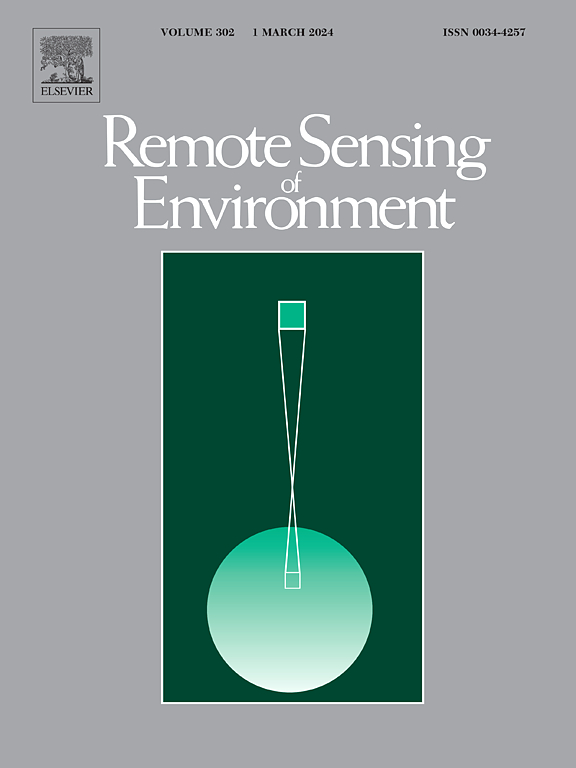Individual tree crown delineation in high resolution aerial RGB imagery using StarDist-based model
IF 11.1
1区 地球科学
Q1 ENVIRONMENTAL SCIENCES
引用次数: 0
Abstract
The availability of high spatial resolution remote sensing imagery has facilitated forestry attribute estimation at the individual tree level. However, producing accurate tree crown delineations for practical applications remains challenging, particularly in mixed forests with overlapping tree crowns. In this study, we propose an individual tree crown delineation method leveraging the StarDist model to improve the delineation accuracy in mixed forests. The StarDist model captures tree crown shapes uniquely through star-convex polygons, which are predicted by the U-Net architecture. The final tree crowns are determined by applying non-maximum suppression (NMS) to all identified star-convex polygons. Performance evaluation on two mixed forest areas reveals a delineation accuracy exceeding 92%, notably outperforming the widely used deep learning model MASK R-CNN by over 6%. In terms of tree crown areas estimation, the for both testing areas is higher than 0.85 for both testing areas. Moreover, the evaluations on precision, recall, and F1-score demonstrate that the proposed model can generate tree crowns fitting well with the true crowns. This study marks the first utilization of the StarDist model for tree crown delineation in mixed forests. Our findings demonstrate the effectiveness of the StarDist model for accurately delineating individual tree crowns, thereby advancing the field of forestry research.
求助全文
约1分钟内获得全文
求助全文
来源期刊

Remote Sensing of Environment
环境科学-成像科学与照相技术
CiteScore
25.10
自引率
8.90%
发文量
455
审稿时长
53 days
期刊介绍:
Remote Sensing of Environment (RSE) serves the Earth observation community by disseminating results on the theory, science, applications, and technology that contribute to advancing the field of remote sensing. With a thoroughly interdisciplinary approach, RSE encompasses terrestrial, oceanic, and atmospheric sensing.
The journal emphasizes biophysical and quantitative approaches to remote sensing at local to global scales, covering a diverse range of applications and techniques.
RSE serves as a vital platform for the exchange of knowledge and advancements in the dynamic field of remote sensing.
 求助内容:
求助内容: 应助结果提醒方式:
应助结果提醒方式:


